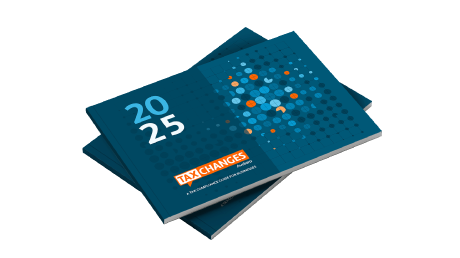
What are tariffs? How do they work?
It’s hard to turn around these days without bumping into the term tariff. If you’ve never given tariffs much thought or aren’t sure how tariff changes can affect you or your business, you’ve come to the right place.
Key takeaways
- Tariffs are an import tax
- The importer typically pays tariffs to customs agents at the point of entry
- Tariffed goods need a Harmonized Tariff Schedule (HTS) code
This blog post will address the following:
What are tariffs?
A tariff is a tax on goods imported from other countries. The term “duty” is often used instead of or alongside the term tariff.
The receiving country controls the tariffs on imported goods. They don’t control tariffs levied on exports; those are controlled by the country of import.
For example, the United States added a 25% tariff on “goods that are the product of Canada” on March 4, 2025. Affected products of Canada shipped into the U.S. on or after that date are subject to the additional tariff. (The U.S. ended up exempting some products, but not others.)
In response to this new tariff, Canada levied a 25% tariff on many goods originating in the U.S. We cover these new tariffs in more depth in What you need to know about the US-Canada trade war.
President Donald J. Trump imposed new tariffs during his first term and has implemented numerous new tariffs since returning to the Oval Office. The U.S. is expected to announce more tariff changes on or before April 2, 2025. Read our regularly updated post, Chips, drugs, and steel — how to prepare for Trump tariffs, for more details.
Who pays tariffs?
Tariffs are typically paid by the importer at the point of entry. U.S. tariffs are collected by U.S. Customs and Border Protection (CBP), and similar governmental agencies collect tariffs in other countries. For instance, Canada Border Services Agency (CBSA) is responsible for collecting tariffs on goods entering Canada.
In some cases, an importer may decide to have the buyer pay the duty upon delivery. This is known as Delivered at Place (DAP).
DAP can lead to disgruntled customers because they aren’t given the goods they purchased until they pay the applicable import taxes and duties. They may even be required to travel to the point of entry to collect their goods. For this reason, Delivered Duty Paid (DDP) is generally preferred. (Learn more about DDP versus DAP.)
What countries have tariffs?
Almost all countries impose at least some tariffs. You can find a list of many countries’ customs duties on the World Trade Organization website (see Summary tables under World Tariff Profiles).
How do tariffs vary by country?
Duty rates are often shaped by factors such as a country’s reliance on imports, international trade agreements, and free trade agreements.
Some countries, like the Bahamas and Cameroon, have extremely high tariffs.
By contrast, Hong Kong and Macau are free ports with no tariffs on general imports — though both impose excise duties or consumption taxes on select imported goods (e.g., distilled spirits and tobacco). Approximately 72% of goods that entered the European Union in 2023 were tariff free.
The standard tariff rates that members of the World Trade Organization (WTO) can impose on other WTO members are known as Most Favored Nation Tariffs, or MFN. These are generally the best tariff rates available, although WTO members can be subject to even lower tariffs due to preferential or trade agreements.
A free trade agreement (FTA) is an agreement between countries that governs certain trade obligations, protections on investor and intellectual property rights, and more. Many countries have an FTA with one or more countries.
The U.S. has approximately 14 FTAs with 20 countries — or at least it did before President Trump returned to office. The fate of these agreements is up in the air.
How do tariffs affect prices?
Tariffs are typically based on a percentage of the sale price in the selling country. They’re sometimes absorbed by the importer, which can reduce profits for that business. Yet often they’re passed on to consumers in the form of higher prices.
Depending on the nature of a tariff (the rate and what it’s applied to), a tariff hike can both reduce profits for a business and increase prices for consumers. Per the Brookings Institute, “which party bears the heaviest burden depends on the specific market.”
How are tariffs established?
Governments generally impose tariffs to:
- Exert political pressure
- Protect domestic industries
- Raise revenue
Tariffs can be imposed broadly on virtually all imported goods, but it’s more common for tariffs to be applied to specific products.
President Trump uses both strategies. He’s threatened to set tariffs on all imports from all countries; he also increased duty rates for steel and aluminum; and on March 26, 2025, he established a 25% tariff on passenger vehicles, light trucks, and certain automobile parts not made in the U.S.
Countries often respond to new tariffs by setting new tariffs of their own.
Tariff FAQ
What is a tariff in simple terms?
A tariff is a tax on imports.
Who has the highest tariffs in the world?
This is a moving target. Currently, the Bahamas, Cameroon, and Chad have some of the highest tariffs in the world.
Who benefits from a tariff?
It depends on the tariff — and who you ask.
The federal government benefits because it receives the tariff revenue. But President Trump maintains his new tariffs will strengthen America’s manufacturing industry and reduce or eliminate threats to U.S. national security.
What happens if you get a tariff wrong?
Applying the incorrect rate of duty can lead to delays at customs, seizures, and penalty charges. To get the tariff right, you need to use the proper Harmonized System (HS) code.
What’s an HS code?
HS codes are the six-digit import/export codes assigned to every product shipped internationally. Tariff rates are based on HS codes.
Every country adds additional digits to the HS code to identify goods entering that country. The U.S. uses Harmonized Tariff Schedule codes (HTS codes) or Harmonized Tariff Schedule of the United States codes (HTSUS codes).
How can you improve tariff compliance?
Because tariff rates are based on HTS codes, ensuring all imported goods have the correct HS code is the first step toward improving compliance.
Automating the assignment of HTS codes with a tool like Avalara Tariff Code Classification can help. Once Avalara classifies the items you sell, Avalara AvaTax Cross-Border can automatically calculate customs duties and import taxes during checkout.
Learn more about Avalara Managed Tariff Code Classification.

Your competitors live by this annual report
Trusted by professionals, this valuable resource simplifies complex topics with clarity and insight.
Stay up to date
Sign up for our free newsletter and stay up to date with the latest tax news.











